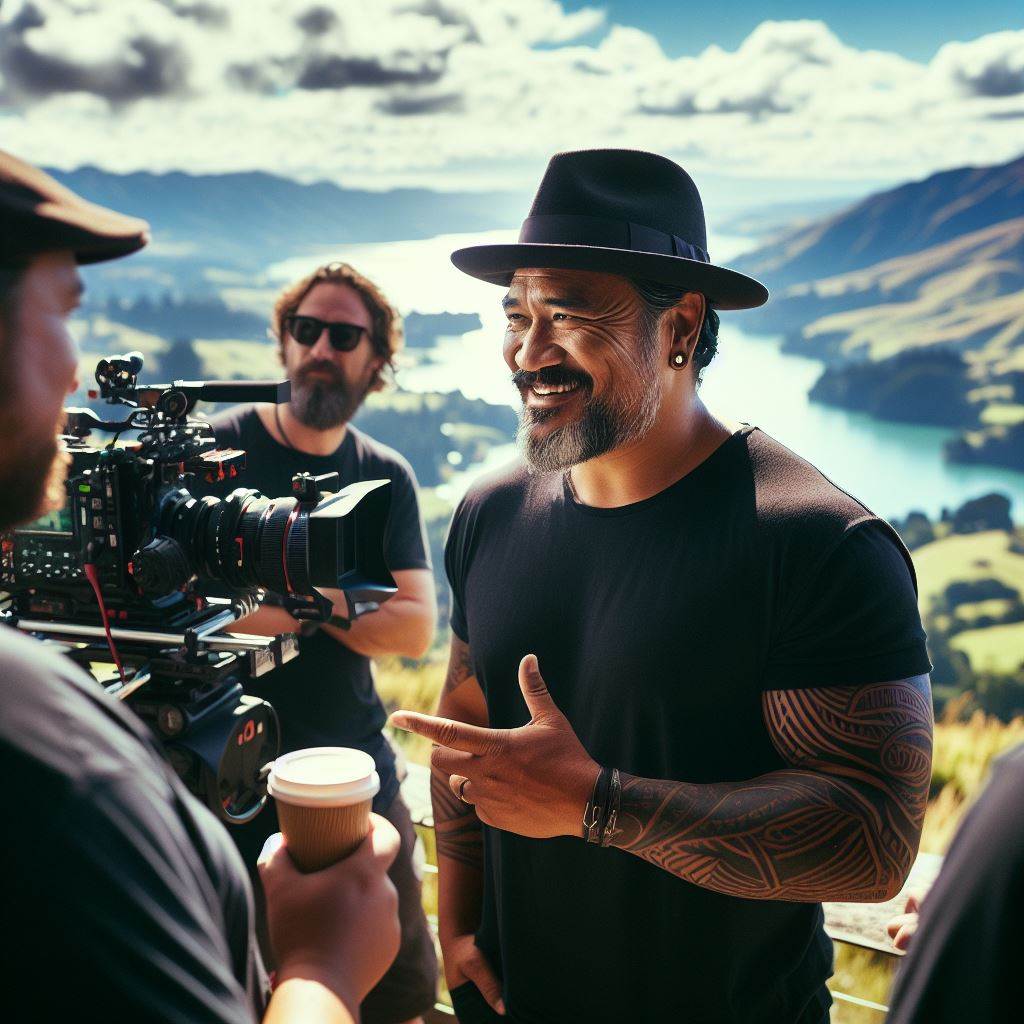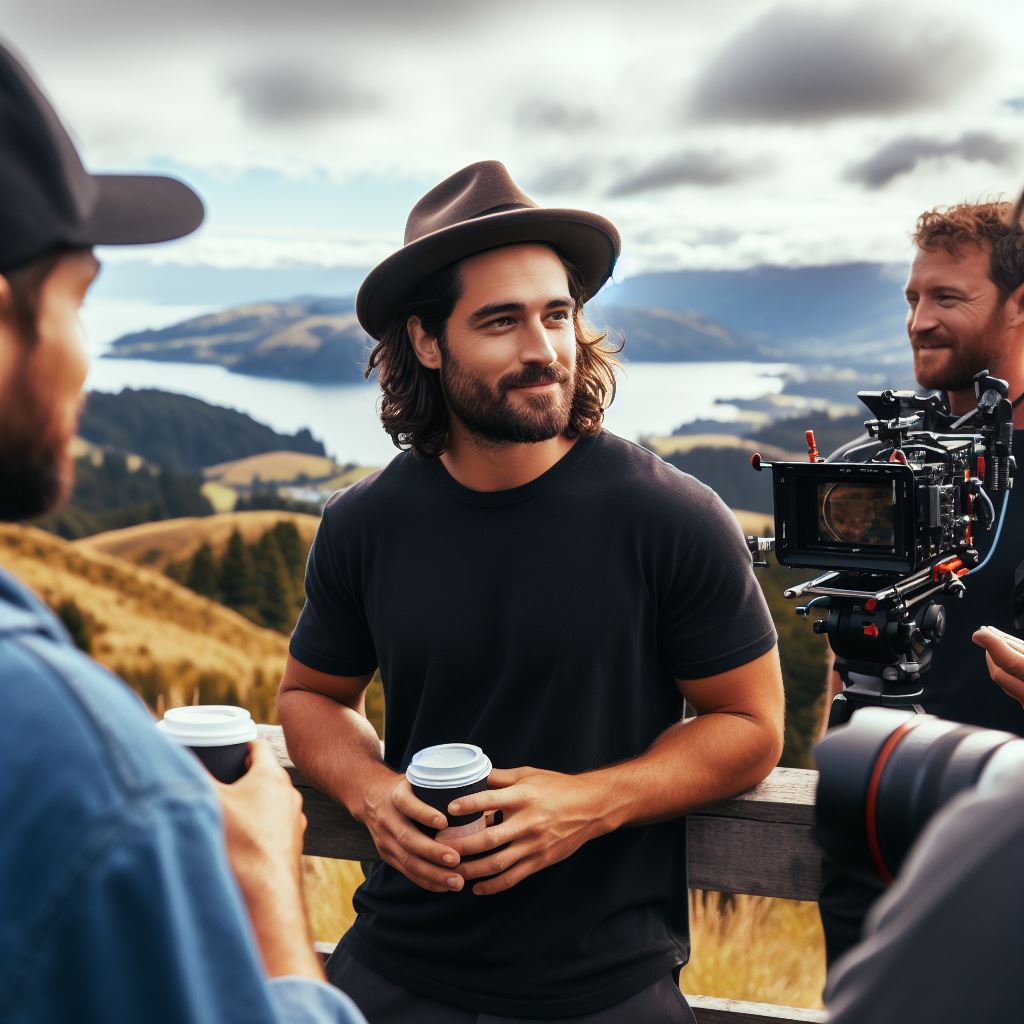Introduction
Directing commercials involves orchestrating visual storytelling to convey messages effectively in a short span.
It encompasses crafting compelling narratives, coordinating production elements, and ensuring the seamless execution of creative concepts.
New Zealand’s advertising industry stands as a vibrant hub of creativity and innovation, characterized by its dynamic approach to commercial storytelling.
With a diverse pool of talented professionals and a penchant for pushing boundaries, New Zealand has emerged as a hotbed for groundbreaking advertising campaigns that captivate audiences worldwide.
The purpose of this blog post is to delve into the kaleidoscopic realm of the creative advertising world in New Zealand.
Through exploration and analysis, we aim to uncover the multifaceted layers of creativity, ingenuity, and craftsmanship that define the advertising landscape in this captivating country.
By shining a spotlight on the innovative minds and captivating campaigns that shape New Zealand’s advertising industry, we seek to celebrate the ingenuity and brilliance that make it a global powerhouse in the realm of commercial storytelling.
Join us on this exhilarating journey as we navigate through the pulsating heart of New Zealand’s advertising industry, where creativity knows no bounds and imagination reigns supreme.
Get ready to be inspired, intrigued, and immersed in the enchanting world of creative advertising in New Zealand.
The Role of a Commercial Director
A commercial director plays a vital role in the advertising industry, overseeing the creation and execution of commercials, which serve as powerful tools for promoting products and services.
As the director, they are responsible for bringing the client’s vision to life, working closely with creative teams and production crews to make it happen.
This chapter will delve into the definition of a commercial director’s role, their responsibilities and required skillset, as well as the importance of collaboration with various stakeholders.
Definition of a Commercial Director’s Role
A commercial director is an individual who leads the creative direction and overall production of commercials.
They are in charge of translating a client’s marketing objectives into visually engaging and persuasive content that captivates the target audience.
Their role involves making strategic decisions to effectively convey the intended message and achieve the desired impact.
The commercial director takes charge of the entire process, from pre-production to post-production.
They collaborate with clients, advertising agencies, and production houses to ensure that deadlines, budgets, and creative requirements are met.
They are responsible for overseeing casting, script development, location scouting, and the final editing process.
Responsibilities and Skillset Required
Commercial directors have a diverse range of responsibilities that require a specific skillset.
First and foremost, they must be excellent communicators, capable of effectively conveying ideas and instructions to the creative team, crew members, and clients.
They need to possess strong leadership skills, as they are responsible for guiding and motivating everyone involved in the production.
Furthermore, commercial directors should have a deep understanding of the advertising industry, staying up-to-date with the latest trends and techniques to create compelling and innovative content.
They must be able to build strong relationships with clients, as this helps to establish trust and ensures that the director fully understands their brand and objectives.
Creativity is another crucial quality for a commercial director.
They must possess a keen eye for visual storytelling and be able to think outside the box to produce unique and memorable commercials.
Additionally, a solid understanding of technical aspects such as cinematography, editing, and post-production is essential to effectively bring the creative vision to life.
Importance of Collaboration
Collaboration is key in the world of commercial directing.
The commercial director must work closely with clients to understand their brand identity, target audience, and marketing objectives.
By establishing a collaborative relationship, they can ensure that the commercial accurately represents the client’s vision and aligns with their overall marketing strategy.
Furthermore, the commercial director collaborates with the creative team, composed of copywriters, art directors, and designers, to brainstorm and develop ideas that align with the client’s goals.
By combining their unique perspectives and skills, they can create commercials that resonate with the audience and leave a lasting impact.
Lastly, collaboration extends to the production crew, which includes cinematographers, set decorators, sound engineers, and editors.
The director’s effective communication and guidance are crucial in coordinating these different departments and ensuring a seamless production process.
In fact, the role of a commercial director is multifaceted, requiring a combination of creative, technical, and leadership skills.
By effectively collaborating with clients, creative teams, and production crews, they can bring the client’s vision to life and create impactful commercials that resonate with the target audience.
Read: Grants for NZ Musicians: A Guide
New Zealand’s Advertising Industry
The advertising industry in New Zealand has experienced significant growth in recent years.
There are a large number of agencies and production companies operating in the country.
Compared to other countries, New Zealand’s ad industry is vibrant and competitive.
Overview of the Advertising Industry’s Growth in NZ
In the past decade, the advertising industry in New Zealand has witnessed remarkable growth.
There has been a surge in the number of campaigns and advertisements produced.
The industry has experienced a boost in creativity and innovation, leading to internationally recognized campaigns.
Statistics on the Number of Agencies and Production Companies
New Zealand boasts a substantial number of advertising agencies and production companies.
Currently, there are over 400+ active agencies and companies operating in the market.
This number continues to increase, showcasing the industry’s vitality and potential for growth.
Personalized Career Consulting
Unlock your potential with expert career advice tailored to your goals. Get personalized guidance and actionable steps toward your dream career in New Zealand.
Get StartedComparison to Other Countries’ Ad Industries
When comparing New Zealand’s ad industry to other countries, it stands out for its uniqueness.
The industry has a distinct creative flair that sets it apart from other global markets.
New Zealand’s advertisements often focus on storytelling and emotional connections with the audience.
Furthermore, the country’s productions are renowned for their stunning cinematography and visual effects.
The industry has gained international recognition for its creative talent and originality.
Despite being a smaller market, New Zealand produces campaigns that rival those of larger economies.
Its advertising industry punches above its weight, attracting international clients and accolades.
New Zealand’s ad industry is not only successful locally, but it also competes on a global stage.
The industry’s growth shows no signs of slowing down, as it continues to push boundaries.
Overall, New Zealand’s advertising industry is an integral part of the country’s creative landscape.
It plays a crucial role in shaping the perceptions and aspirations of the public.
With its unique approach and talented professionals, the industry has positioned itself as a global player.
Read: Women in NZ Music: Rising Stars
Creative Ad Concepts in NZ
In the world of advertising, New Zealand has become renowned for its innovative and memorable commercials.
These ads are not only visually stunning but also creatively captivating, leaving a lasting impression on viewers.
Let’s delve into the showcase of these exceptional adverts and explore the unique storytelling techniques employed by Kiwi directors.
New Zealand’s creative ad world is filled with gems that push the boundaries of traditional advertising.
These commercials go beyond selling a product; they strive to connect with viewers on an emotional level.
One such example is the iconic Air New Zealand safety video, which took the aviation industry by storm.
This imaginative concept featured hobbits, elves, and magical creatures, transporting viewers to the enchanting world of Middle-earth.
In addition to fantastical concepts, NZ ads often delve into the realm of humor.
The success of this approach can be seen in the advertisements for the chocolate brand, Whittaker’s.
With the catchphrase “Good Honest Chocolate,” these commercials playfully showcase the brand’s commitment to quality while inducing laughter.
By infusing humor into their ads, New Zealand marketers effectively capture the attention of their target audience.
Transform Your Career with a Professional CV and Cover Letter
Stand out to employers with an ATS-optimized resume and tailored cover letter designed to match your dream role. Let us craft your job application materials for success!
Get StartedUnique storytelling techniques
Another characteristic that sets NZ ads apart is their storytelling prowess. These commercials often take viewers on a captivating journey, weaving a narrative that resonates on a deeper level.
An example of this can be seen in the recent ANZ Bank commercial titled “Barbara.” This touching ad follows the life of a transgender woman, highlighting the role of acceptance and support in society.
By telling stories that reflect the diversity and experiences of individuals, New Zealand ads effectively engage viewers and evoke powerful emotions.
Importance of cultural diversity in creating effective ads
Cultural diversity plays a vital role in the creation of effective ads in New Zealand.
With a multicultural society, advertisers have embraced the importance of inclusivity and representation.
This can be seen in the advertisements for Vodafone, which feature people from various ethnic backgrounds, showcasing the universal need for connection in today’s digital age.
By incorporating cultural diversity in their commercials, New Zealand marketers ensure that their message resonates with a wide range of audiences.
Furthermore, NZ ads often make use of stunning visual landscapes to enhance their storytelling.
With its breathtaking scenery, the country serves as the perfect backdrop for capturing viewers’ attention.
Brands like Tourism New Zealand and New Zealand Post capitalize on this natural beauty, creating commercials that effortlessly transport viewers to the country’s idyllic settings.
These visuals not only leave a lasting impression but also evoke a sense of curiosity and wanderlust.
In a nutshell, New Zealand’s creative ad industry is filled with exceptional concepts that captivate audiences through their innovation and memorable storytelling.
These commercials go beyond traditional advertising, connecting with viewers on an emotional level.
By embracing cultural diversity and incorporating stunning visuals, Kiwi directors have truly mastered the art of creating effective and engaging ads.
Whether it’s through humor, fantastical concepts, or thought-provoking narratives, New Zealand’s adverts continue to leave a lasting impression on viewers worldwide.
Read: NZ Music Festivals: Behind Scenes

Collaborating with Creative Teams: Importance, Examples, and Benefits
Working closely with creative teams is crucial for directors in the advertising industry.
By fostering effective collaboration, directors can produce high-quality commercials that capture audience attention and achieve client objectives.
This chapter will explore the importance of collaboration, provide examples of successful collaborations in New Zealand, and discuss the benefits it brings to commercial production.
Importance of Collaboration between Directors and Creative Teams
- Creative synergy: When directors collaborate with creative teams, a diverse range of ideas and perspectives merge, leading to innovative concepts and executions.
- Enhanced storytelling: By working together, directors and creative teams can develop compelling narratives that resonate with the target audience and effectively communicate the brand message.
- Effective problem-solving: Collaboration allows for the identification and resolution of any challenges or obstacles that may arise during the production process, ensuring smoother execution.
Examples of Successful Collaborations in NZ
- The “Dancing Cows” campaign for Anchor Milk: Director Jane Campion collaborated with a team of writers, animators, and choreographers to create an iconic and memorable series of commercials. The collaboration resulted in a visually stunning and emotionally engaging campaign.
- The “Ghost Chips” campaign for the New Zealand Transport Agency: Director Taika Waititi partnered with a team of writers and actors to produce a series of humorous and thought-provoking commercials that addressed the issue of drunk driving. The collaboration effectively conveyed the serious message while still entertaining the audience.
Benefits of Collaboration for Producing High-Quality Commercials
- Increased creativity: Collaboration fosters an environment where the collective imagination of the team can flourish, resulting in fresh and inventive ideas.
- Diverse skills and expertise: By collaborating with professionals from different backgrounds, directors can tap into a wide range of skills and expertise, enhancing the quality and execution of the commercial.
- Streamlined production process: Effective collaboration ensures better coordination among various departments, reducing the chances of miscommunication and delays that can compromise the final product.
- Client satisfaction: Through collaboration, directors can align their vision with the client’s objectives, ensuring that the commercial meets their expectations and achieves desired results.
In essence, collaborating with creative teams is essential for directors in the advertising industry.
The importance of collaboration lies in the creative synergy, enhanced storytelling, and effective problem-solving it brings.
Successful collaborations like the “Dancing Cows” campaign and the “Ghost Chips” campaign in New Zealand demonstrate the positive outcomes that can arise from collaborative efforts.
Ultimately, by embracing collaboration, directors can harness increased creativity, diverse skills, streamlined production processes, and ultimately, client satisfaction, resulting in high-quality commercials that captivate audiences.
Read: Maori Music: NZ’s Rich Heritage
Technical and Creative Challenges
Being a commercial director comes with its fair share of challenges.
Not only do these directors have to navigate the technical aspects of creating a commercial, but they also face creative hurdles that can significantly impact the success of the advertisement.
Let’s take a closer look at some of these challenges:
Balancing Creative Vision
One of the primary challenges faced by commercial directors is finding the right balance between their creative vision and the expectations of the client.
While directors bring their unique artistic perspective to the table, they must also ensure that their ideas align with the client’s goals and vision for the advertisement.
Managing Client Expectations
Commercial directors have the difficult task of managing client expectations. It is crucial to understand the client’s desired message, target audience, and objectives for the commercial.
Directors must effectively communicate with the client throughout the creative process to ensure their expectations are met while still staying true to their artistic vision.
Budget Constraints
Another significant challenge faced by commercial directors is working within budget constraints. They must find ways to create impactful advertisements while staying within the allocated budget.
This often involves making strategic decisions regarding location, cast, equipment, and post-production processes to achieve the desired outcome without exceeding the financial limitations.
Utilizing New Technologies
Commercial directors also face the challenge of staying updated with the latest advancements in technology and equipment.
They must keep track of emerging trends and tools that can enhance the production process and deliver visually captivating commercials.
The use of advanced equipment like drones, virtual reality, and high-resolution cameras can elevate the quality and creative appeal of the final product.
Dealing with Time Constraints
Time is a critical factor in the world of commercial directing.
Working with tight deadlines can be highly challenging, as directors must ensure that every aspect of the commercial is executed flawlessly within the given timeframe.
This requires efficient planning, effective communication, and meticulous attention to detail.
Directing commercials is a multifaceted endeavor that involves both technical and creative challenges.
Balancing the director’s artistic vision with client expectations and budget constraints is no easy task.
Additionally, keeping up with new technologies and working within tight timeframes add further complexity to the job.
However, it is through these challenges that commercial directors can push their creative boundaries and deliver impactful and memorable advertisements.
Read: NZ Artists’ Paths: Education to Success
Boost Your Career with a Standout LinkedIn Profile
Attract recruiters and expand your network with a fully optimized LinkedIn profile tailored to highlight your strengths and professional goals. Let your profile open doors to new opportunities!
Get OptimizedThe Future of Commercial Directing in NZ
Trends and predictions for the future of commercial directing in NZ
- The demand for authentic storytelling will continue to rise, with audiences craving genuine connections.
- Shorter attention spans will require directors to capture viewers’ attention within the first few seconds.
- Brands will increasingly prioritize diversity and inclusivity, requiring directors to reflect these values in their work.
- Interactive and immersive commercials will become more prevalent, allowing viewers to engage actively.
- The use of data analytics will enable directors to create personalized and targeted advertisements.
Impact of technology and digital media on commercials
- The rise of social media platforms will lead to more online advertisements, targeting specific audiences.
- Virtual reality and augmented reality will revolutionize the way commercials are experienced.
- Digital platforms will offer new avenues for distribution, reaching wider audiences globally.
- Advancements in artificial intelligence will enhance the production process, making it more efficient.
- Mobile devices will continue to dominate, requiring commercials to be optimized for small screens.
Opportunities and challenges for aspiring commercial directors
- Emerging technologies provide opportunities for innovative storytelling and unique visual styles.
- The accessibility of affordable filmmaking equipment allows aspiring directors to create high-quality content.
- Collaboration with advertising agencies and production companies can open doors for new directors.
- Competition within the industry is fierce, making it crucial for directors to stand out from the crowd.
- Adapting to the evolving advertising landscape and staying updated with emerging trends is essential.
The future of commercial directing in NZ holds exciting prospects for aspiring directors. While technology and digital media present challenges, they also offer numerous opportunities for innovation and creativity.
By staying attuned to emerging trends, adapting to changing audience preferences, and harnessing the power of new technologies, commercial directors can thrive in this dynamic industry.
Conclusion
To conclude, we have explored the fascinating world of directing commercials in New Zealand’s creative ad industry.
We have seen how this creative process involves collaborating with clients and a talented team to bring advertising visions to life.
Through our discussion, it is evident that New Zealand offers a thriving and innovative ad market, with a reputation for producing memorable and impactful campaigns.
The country’s stunning landscapes and diverse culture provide a unique backdrop for creative storytelling.
For our readers, we encourage you to dive deeper into the creative ad world in New Zealand.
Whether you are a director, aspiring filmmaker, or simply an enthusiast, there is a wealth of inspiration waiting to be discovered.
The importance of commercial directing cannot be overstated in the advertising industry.
These talented individuals have the power to shape public perception, evoke emotions, and drive consumers to take action.
They are the storytellers who captivate audiences, bridge the gap between brands and consumers, and ultimately, help create successful advertising campaigns.
In fact, directing commercials is an art form that requires a keen eye for detail, great communication skills, and a passion for storytelling.
It is a career path that allows for immense creativity and the opportunity to work with talented professionals across diverse industries.
So, embrace the world of commercial directing and immerse yourself in the exciting and ever-evolving landscape of advertising in New Zealand.
Explore the endless possibilities, unleash your creativity, and contribute to the legacy of impactful and memorable campaigns.




